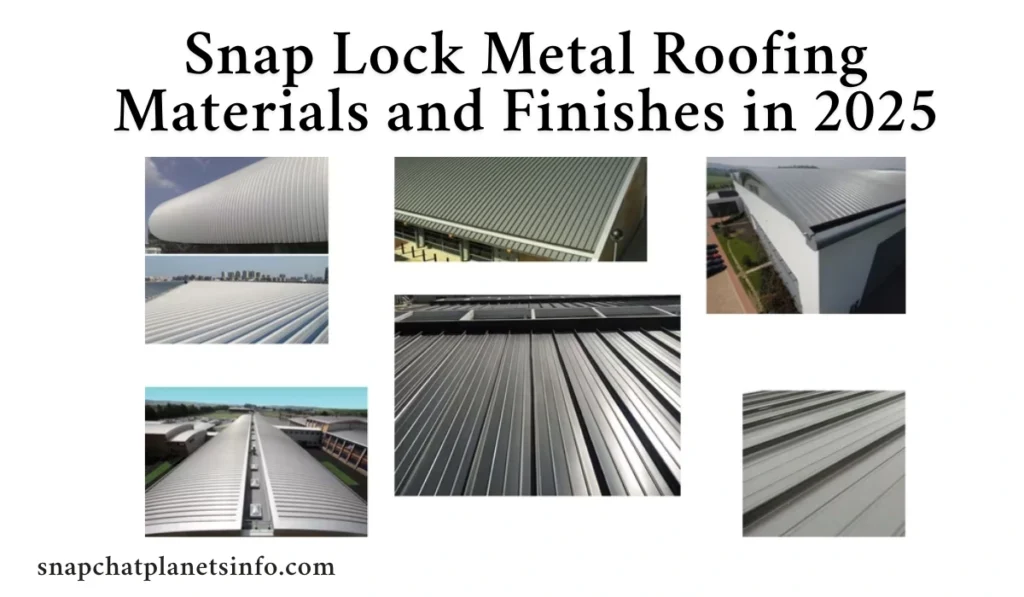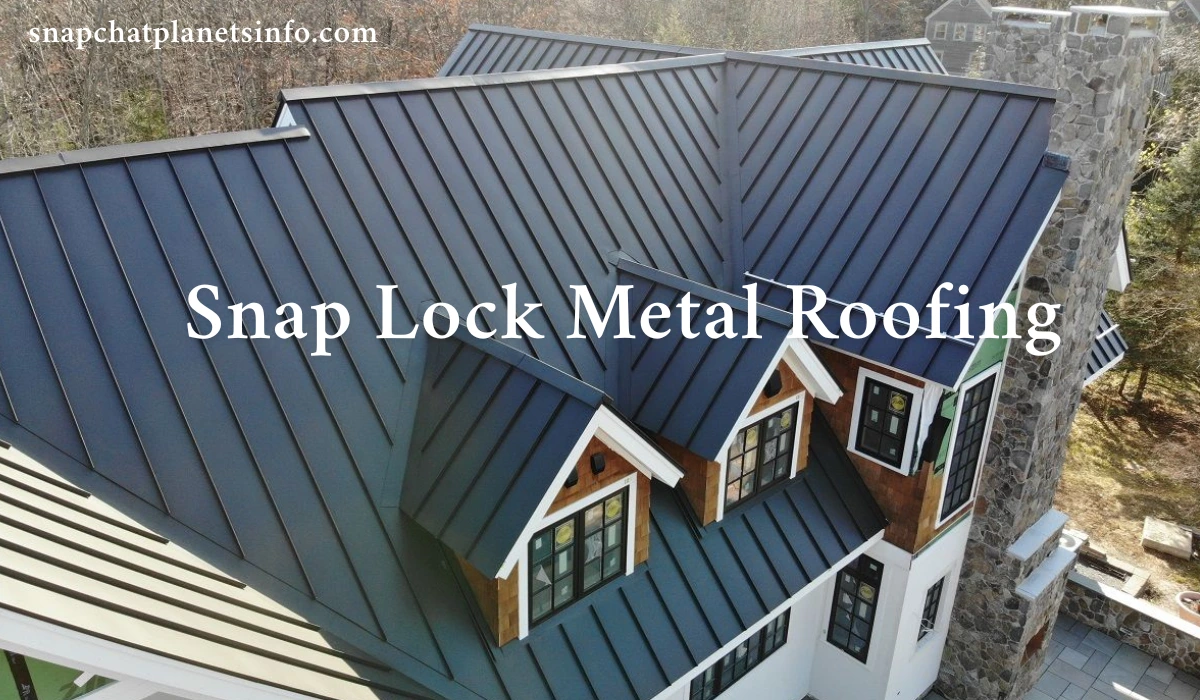Snap Lock Metal Roofing has gained wide acceptance among modern homeowners. It combines sleek design with decades of reliable protection. This roofing style uses hidden fasteners and snap-together seams for a clean finish. As roofing trends evolve in 2025, snap lock metal roofing stands out for its blend of form and function.
What Is Snap Lock Metal Roofing?
Snap lock metal roofing is a standing-seam panel system that secures by snapping raised ribs together. Each panel interlocks without crimping tools or exposed screws. Concealed clips fasten panels to the deck and allow thermal movement. The result is a continuous surface that resists leaks and enhances curb appeal.
How Snap Lock Panels Work
Installers first roll-form panels to precise lengths on site. They attach concealed clips along the roof deck at manufacturer-specified centers. Each panel engages the prior panel’s rib and snaps into place. This seamless joining method delivers strong wind uplift resistance and superior weather protection.
Key Benefits of Snap Lock Metal Roofing
Snap lock metal roofing offers homeowners a blend of durability, performance, and style. Its hidden fasteners eliminate exposed screws, reducing leak points and enhancing curb appeal. Panels snap together without special tools, speeding installation and lowering labor costs. The concealed clip system accommodates thermal expansion, preventing seam fatigue in extreme weather. High-quality steel or aluminum panels with PVDF finishes resist corrosion, fading, and chalking for decades.
Reflective coatings improve energy efficiency by reducing heat gain and can qualify for rebates. Minimal maintenance is required beyond an annual rinse and inspection. With a lifespan of 40 to 60 years, snap metal roofing protects investments and boosts property value while supporting sustainable, recyclable practices. It withstands hail and snow reliably.
Read more: How does snap score go up
Snap Lock Metal Roofing Materials and Finishes in 2025

By 2025, snap lock metal roofing panels use Galvalume steel and aluminum alloy, offering a zinc-aluminum barrier that fights corrosion. Aluminum resists salty air near coasts and stays lightweight. Panels come in gauges from 26 to 22 for steel and 0.032 to 0.040 inch for aluminum.
Most roofs include a PVDF finish that resists chalking and fading for decades while keeping colors bright under UV exposure. Owners can pick from dozens of factory colors or add clear coats for extra durability and natural metal looks. Finish options suit both residential and commercial applications, supporting modern design goals and design versatility.
Design Flexibility and Aesthetics
Snap lock metal roofing panels come in multiple rib heights and widths to match design needs. Rib heights range from 25 mm to 44 mm to create varied shadow lines and a sleek profile. Wide cover widths minimize seams on large spans.
On-site roll forming produces panel lengths that fit each project precisely and reduce waste. Homeowners can choose from dozens of factory colors and finishes to match their design goals. Architects favor this system’s versatile angles, seamless transitions, and modern appeal.
This flexibility lets designers create roof and wall solutions. Snap lock panels suit both classic and modern styles.
Durability and Weather Resistance
Metal roofs outperform asphalt shingles in lifespan and strength. Snap lock metal roofing resists hail impacts, high winds, and heavy snow loads. Concealed clips allow panels to expand and contract, preventing seam fatigue. Quality finishes also resist fading, chalking, and corrosion for decades.
Installation Process
Roof installers first lay a breathable underlayment over plywood or metal deck. They then set concealed clips at regular intervals. Panels roll-form on site to eliminate shipping damage and waste. Installers snap each seam by hand or with a simple tool. Finally, they install trim and flashing to seal edges and penetrations.
Maintenance Guidelines
Snap lock metal roofing needs little upkeep. An annual rinse removes dust, leaves, and debris. Inspect trim and sealants for gaps after winter storms. Promptly replace any damaged panels or worn sealant to maintain a watertight roof. Routine checks ensure the system meets its full lifespan.
Cost Considerations and ROI
Initial costs exceed traditional shingles but provide long-term savings. Energy rebates may apply for reflective finishes that lower cooling bills. Snap metal roofing cuts maintenance expenses and repair frequency. Homeowners often recoup the premium investment within 10 to 15 years through energy and upkeep savings.
Environmental Impact and Sustainability
Most metal roof panels contain recycled content and remain fully recyclable at end of life. Reflective PVDF finishes reduce solar heat gain, lowering energy use. In many regions, roofs with high reflectivity earn green-building credits. Choosing metal roofing supports sustainable construction practices.
Read more: How to increase snap score
Common Misconceptions
Many homeowners fear noise from rain or hail on metal roofs. In reality, underlayment and attic insulation muffle sound effectively. Others worry metal roofs rust quickly. Quality coatings and proper gauges ensure corrosion resistance for decades. Snap metal roofing stands up to myths with proven performance.
| Feature | Snap Lock Metal Roofing |
|---|---|
| Installation Time | Fast, no seaming machine required |
| Maintenance | Annual rinse and inspection |
| Lifespan | 40–60 years |
| Weather Resistance | High wind, hail, snow, and UV durability |
| Energy Efficiency | Reflective finishes lower heat gain |
Frequently Asked Questions
What roof pitch works best for snap lock metal roofing?
This system performs best on slopes of 3:12 or steeper. Flatter roofs risk water pooling. For lower pitches, consider double-locked mechanically seamed panels.
How long will a snap lock metal roofing system last?
Panels often last 40 to 60 years when installed correctly. High-quality finishes and routine inspections help achieve maximum lifespan.
Can I use snap lock panels for wall cladding?
Yes. The hidden-fastener design suits both roofs and vertical walls. It creates a seamless, modern façade with minimal maintenance.
Is snap metal roofing energy efficient?
Absolutely. Reflective finishes reduce heat absorption, cutting cooling costs. Many homeowners also qualify for energy rebates.
Conclusion
Snap lock metal roofing delivers decades of reliable protection with minimal upkeep. Its hidden-fastener design resists leaks and enhances curb appeal. Homeowners benefit from energy savings with reflective finishes.
Investing in this system pays off through long service life and lower maintenance. Professional installers can complete each roof more quickly than with traditional panels. With proper care and routine inspections, a snap metal roofing installation will protect a home for half a century.
The recyclable materials and 100% recyclability of panels support green building goals. Choosing snap lock metal roofing boosts property value and reduces lifetime costs.
This combination of durability, efficiency, and striking design makes it a top roofing choice in 2025. Experience peace of mind with this innovative solution.
